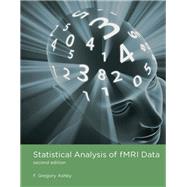Statistical Analysis of fMRI Data, second edition
, by Ashby, F. Gregory- ISBN: 9780262042680 | 0262042681
- Cover: Hardcover
- Copyright: 9/17/2019
Functional magnetic resonance imaging (fMRI), which allows researchers to observe neural activity in the human brain noninvasively, has revolutionized the scientific study of the mind. An fMRI experiment produces massive amounts of highly complex data for researchers to analyze. This book describes all aspects of experimental design and data analysis for fMRI experiments, covering every step—from preprocessing to advanced methods for assessing functional connectivity—as well as the most popular multivariate approaches. The goal is not to describe which buttons to push in the popular software packages but to help researchers understand the basic underlying logic, the assumptions, the strengths and weaknesses, and the appropriateness of each method.
The field of fMRI research has advanced dramatically in recent years, in both methodology and technology, and this second edition has been completely revised and updated. Six new chapters cover experimental design, functional connectivity analysis through the methods of psychophysiological interactions and beta-series regression, decoding using multi-voxel pattern analysis, dynamic causal modeling, and representational similarity analysis. Other chapters offer new material on recently discovered problems related to head movements, the multivariate GLM, meta-analysis, and other topics. All complex derivations now appear at the end of the relevant chapter to improve readability. A new appendix describes how to build a design matrix with effect coding for group analysis. As in the first edition, MATLAB code is provided with which readers can implement many of the methods described.






